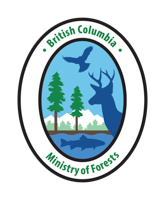Upper Penticton Creek Watershed Experiment: Integrated Water Resource Research on the Okanagan Plateau
The security of water supplies, the protection of aquatic habitat and the response of forested watersheds to land-use and climate change are key issues of concern in the dry southern interior of British Columbia. These concerns lead to the establishment of the Upper Penticton Creek Watershed Experiment in 1984 by the BC Government with the aim to:
• improve our understanding of hydrologic processes in the southern interior,
• quantify changes in hydrologic processes as a result of forest disturbance and regrowth, and
• develop planning tools and guidelines for sustainable timber and water production in the Okanagan Basin.
Long-term experiments and environmental monitoring at Upper Penticton Creek continue to focus on streamflow, snow accumulation and melt, the water balance, and groundwater. With historic data and results as the foundation, researchers are also working with computer models to understand the effects of climate change, increasing water demand, and alternative management strategies on long-term water supplies.
Since its establishment, the Upper Penticton Creek Watershed Experiment has been a cooperative project led by the BC Ministry of Forests, Lands, Natural Resource Operations and Rural Development in collaboration with Environment and Climate Change Canada, BC Ministry of Environment and Climate Change Strategy, FORREX, Gorman Brothers Lumber Co. Ltd., the Okanagan Basin Water Board, the Okanagan Nation Alliance, Simon Fraser University, Thompson Rivers University, the University of British Columbia, and Weyerhaeuser Co. Ltd.
Study Site
The Upper Penticton Creek watershed experiment is located on the Okanagan Plateau approximately 26 km northeast of Penticton, BC. It includes the watersheds of 240, 241 and Upper Dennis Creeks; all small headwater tributaries to Penticton Creek. Each watershed covers an area of approximately 5 km2 and the area extends from 1600 to 2100 meters in elevation. These watersheds are typical of the upland source area supplying water to the Okanagan Valley.
Annually, 2 million cubic metres of water flow from each watershed. The highest daily flows occur in mid to late May, during snowmelt, and can reach 1.5 m3s-1. August through April low flows are often less than 0.01 m3s-1 and are predominantly sustained by groundwater. Mean annual precipitation is 700 mm, approximately half of which falls as snow.
All watersheds are forested; 240 and 241 Creek with lodgepole pine and Upper Dennis Creek with Engelmann spruce, subalpine fir and some lodgepole pine. Mature trees are over 100 years old and up to 24 m tall. Soils are formed on morainal and glaciofluvial sediments derived from coarse-grained granitic rocks. Soils are coarse sandy-loam over loamy-sand in texture with low water holding capacities and are well or rapidly drained.
Design
The Upper Penticton Creek watershed experiment was established in 1984 following a paired, pre- and post- treatment design. The experiment includes three study watersheds, 240, 241 and Upper Dennis Creeks. The area remained unlogged until 1995 with the exception of a small area of blowdown near the 241 Creek streamflow gauge which was salvage logged in 1992. The 240 Creek watershed continues to be unlogged and is the experimental control.
Road construction and clearcut logging began in late 1995 and progressed in phases interspersed with monitoring periods. By late winter of 2007, 47% of the 241 and 52% of the Upper Dennis Creek watersheds had been clearcut. Logging was completed using conventional ground-based techniques. All cutblocks have since been reforested and non-essential roads deactivated. Second growth stands are fully restocked with lodgepole pine, some Engelmann spruce and subalpine fir.
Hydrometric measurements began in 1985. Since then a network of weather stations and snow survey grids have been established. Water quality monitoring occurred from 1992 to 2009. In 2007, two deep (30 m and 50 m) wells were drilled at the upper elevation in the 241 Creek watershed.
Early research focused on seasonal and annual water yield. Study topics were expanded in the 1990s to include the water balance, nutrient transport, forest-snow interactions, water quality, aquatic ecology, channel morphology, groundwater, subsurface flow, low flows, and the effects of climate change on water supplies. Now as forests are generating, research is focused on hydrologic recovery, the effects of forest regrowth on transpiration, shallow groundwater, soil moisture, streamflow, and forest-snow interactions. Research approaches include stand-scale field projects, assessment of watershed responses, and hydrologic modelling.
